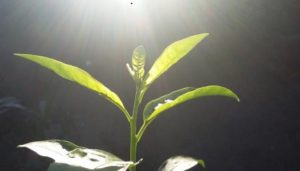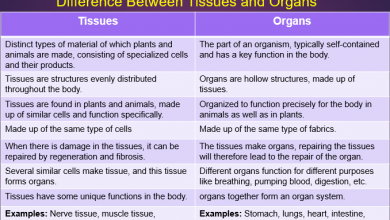Difference Between Autotrophic And Heterotrophic Organisms & Examples
We explain that what is the difference between Autotrophic and Heterotrophic Organisms? with examples of autotrophs and heterotrophs Organisms. In addition: Definitions and energy production are in detail to easily understand.
Do you know how the beings that live on Earth nourish themselves and get energy? We know that animals get energy when they eat, but what happens, for example, with algae or other beings that do not have a mouth and a digestive system?
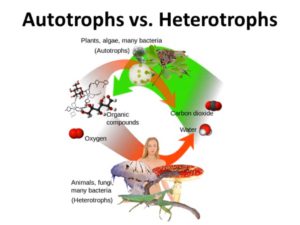
Definition Of Autotroph And Heterotroph
Before explaining the definition of autotroph and heterotroph, it is very important to know what carbon is. Carbon is the chemical element of life, it is capable of structuring itself in many ways and establishing links with a multitude of chemical elements, in addition, its low weight makes it the perfect element for life. We are all made of carbon and, in one way or another, we need to take it from the environment around us.
Both the word autotroph and heterotroph derive from Greek. The word “autos” means “by itself”, “heteros” is “other” and “trophe” means “nutrition”. According to this etymology, we understand that an autotrophic being creates its own food and that a heterotrophic being needs another being to feed itself.
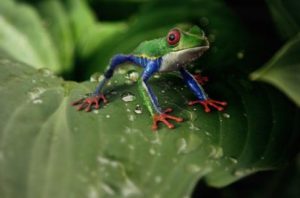
It can Serve You: What are the plants?
What Are Heterotrophic Organisms?
Heterotrophic organisms are also called consumers since they obtain energy for their metabolic activities from the consumption of plants and producer organisms.
These types of organisms are unable to produce their own food and require autotrophic organisms, both directly and indirectly, for their survival. The categories into which heterotrophic organisms are classified are more varied than that of autotrophs.
Energy Production Of Autotrophic Organisms
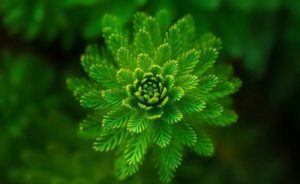
Autotrophs produce their own energy by one of two methods:
Photosynthesis
Photosynthetic beings use energy from the sun to convert water and carbon dioxide into glucose. Glucose supplies energy to plants and is used to make cellulose, which in turn is used to build cell walls. Examples: plants, algae, phytoplankton, and some bacteria.
Carnivorous plants use photosynthesis for energy but depend on other organisms for nutrients such as nitrogen, potassium, and phosphorus. Therefore, these plants are autotrophic, with heterotrophic complementation.
Chemosynthesis
Chemosynthetic beings use the energy from chemical reactions to produce food. Chemical reactions are normally between hydrogen sulfide or methane with oxygen. Carbon dioxide is the main carbon source for chemotrophs.
Some examples of chemosynthetic beings are bacteria found within active volcanoes, and microorganisms found in hydrothermal vents, at the bottom of the sea, or in hot water sources.
Obtaining Energy By Heterotrophic Organisms

Heterotrophs survive by feeding on other organisms in the food chain, such as plants or animals. Herbivores are called primary consumers because they feed directly from the producers. Carnivores are the secondary consumers, as they feed on herbivores.
- Omnivores: They eat both meat and vegetables. Example: humans, bears, pigs;
- Hematophages: They feed on the blood of other beings. Example: louse, bug, mosquito;
- Ornithophages: They feed on the meat of birds. Example: peregrine falcon;
- Ictiophages: They feed on fish. Examples: sea lion, osprey;
- Dung: They feed on the feces of other animals. Example: Beetles and some species of flies;
- Insectivores: They eat insects. Example: toads;
- Scavengers: They feed on organic waste, whether of vegetable or animal origin. Example: buzzard, hyena;
- Planktivores: They feed on plankton. Example: Stripe.
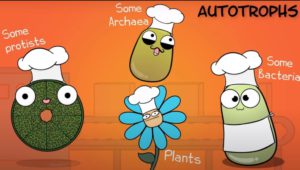
Examples Of Autotrophs And Heterotrophs
Examples Of Autotrophic Organisms
Some clear examples of autotrophic organisms are:
Plants
Plants are usually photoautotrophic organisms, with very few exceptions (such as carnivorous plants, such as the Venus flytrap that feeds on flies). Thanks to chlorophyll, it captures photons of light and produces sugars and other substances for food. Plants are usually consumed by heterotrophic animals that use these organic substances.
Green algae
Green algae, such as verdigris or some seaweed, are photoautotrophic organisms. In fact, green algae come from ancient cyanobacteria, a type of green algae that began the process of turning Earth into a planet with an oxygen-rich atmosphere.
Iron bacteria
These organisms are chemoautotrophs. An example is the bacterium Acidithiobacillus ferrooxidans, which obtains energy from ferrous iron, transforming it from an insoluble to a soluble form. These types of organisms have applications in biohydrometallurgy and mineral extraction that cannot be extracted by conventional means.

Sulfur bacteria
chemoautotrophs, they live in accumulations of pyrite, which is a mineral made of sulfur, on which they feed.
Examples Of Heterotrophic Organisms
There are many more categories in heterotrophic organisms than in autotrophs. Some examples of heterotrophic organisms are:
Herbivores
These organisms feed on plants, which is why they are also called primary consumers. Through this diet, they obtain, among other molecules, complex carbohydrates such as starch or cellulose. Starch is easily broken down (most animals have amylase), but cellulose (a component of plant cell walls) requires a special enzyme, cellulase, which is found specifically in the intestines of herbivorous animals or by organisms. symbiotic intestines.
Examples of herbivorous animals are cows, deer, sheep, and other ruminants or elephants. Those that feed on fruits or frugivores such as birds, bats, or monkeys are also considered herbivores.
Carnivores
They feed on primary or herbivore consumers, or other carnivores, which is why they are also called secondary and tertiary consumers. The energy they obtain is that which flows throughout the entire food chain, starting with autotrophic organisms. This energy is used to make its biomolecules or is stored.
Examples of carnivorous organisms are lions, snakes, and sharks. Scavengers such as vultures or cockroaches are also carnivores since they consume meat from dead animals.
Decomposers
They feed on the dead organic matter through decomposition and absorption. These substrates on which they feed can be very diverse, such as wood, cheese, meat, or litter. Examples of decomposing organisms are some fungi or small invertebrates. The decomposers play an important role in the trophic cycles of ecosystems because they act allowing the recycling of nutrients within ecosystems. In addition, they are important for humans economically and for food, because thanks to them we can produce certain foods that we consume.

Fungi And Protozoa
absorb organic carbon from their environment. They are chemoheterotrophs.
Purple Sulfur – Free Bacteria
These are photoheterotrophs that use non-sulfur organic acids for energy, but get carbon from organic matter.
Heliobacteria
other photoheterotrophs that require sources of organic carbon found in the soil, especially in rice crops.
Manganese-Oxidizing Bacteria
A chemoheterotroph uses lava rocks for energy but relies on its environment for organic carbon.
Difference Between Autotrophic And Heterotrophic Organisms
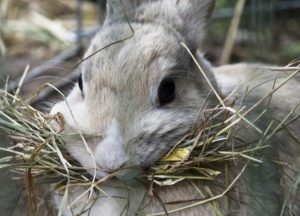
| Autotrophic organisms | Heterotrophic organisms | |
|---|---|---|
| What are they? | The word autotroph comes from the Greek autos, proper and trophe, food or nutrition. Autotrophic nutrition is that way of feeding some organisms in which they are capable of producing their own food from inorganic compounds. They do this by fixing carbon obtained from CO 2 in air or water. Autotrophic organisms are the first link in the food chain. For this reason, they are a very important part of it, since the other links totally depend on them. | On the other hand, heterotrophic organisms (heterotrophic, different, and trophe, feeding) are not capable of producing their own food. This type of nutrition is completely dependent on the consumption of other organisms. Heterotrophic organisms transform the organic matter they consume into nutrients and energy that they use for their development. The next steps in the food chain after the first will always be made up of heterotrophic organisms. |
| Types | Autotrophic nutrition can be divided into the following categories depending on the way in which they fix the obtained carbon:
|
Regarding heterotrophic nutrition, it is divided into:
Types
|
| Produce your own food | Yes. | No. |
| Level in the food chain | Producer. | Primary, secondary, and tertiary consumers. |
| What do they eat | They produce their own food through light or chemical energy. | They eat other organisms (plants or animals) for protein and energy. |
| Examples | Most plants, some bacteria, some algae, etc. | Some plants (such as carnivorous plants), all animals, protozoa, fungi, and most bacteria, among others. |
Summary Of The Difference Between Autotrophic And Heterotrophic Organisms
In summary, you can see 3 differences between autotrophic and heterotrophic organisms that are fundamental:
- Autotrophic organisms make their own food through photosynthesis or chemosynthesis, while heterotrophs depend on autotrophic organisms for their food and use energy for their metabolism.
- Most autotrophs use the pigment chlorophyll, while heterotrophs do not have chlorophyll.
- Autotrophic organisms depend directly on sunlight, while heterotrophs do indirectly.
Related Links:
